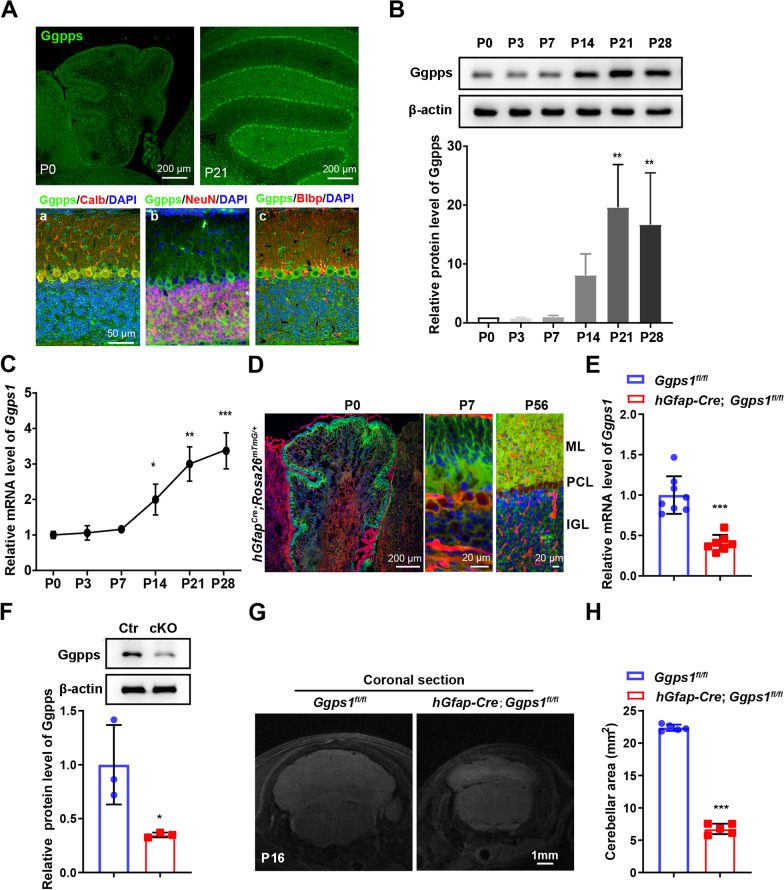Fig. 1.
A requirement of Ggpps for cerebellar development. A Representative fluorescence images for Ggpps and co-staining for Ggpps/Calbindin, Ggpps/NeuN and Ggpps/Blbp in the cerebellum of a control mouse. Brain sections at P0 and P21 (a, b, c) were used. Scale bar is 50 μm in a–c. B Western blotting on Ggpps using cerebellar samples across ages. There was an age-dependent increase on Ggpps levels in the postnatal cerebellum (**P = 0.002, **P = 0.008, respectively; n = 3 mice per age). Raw data were shown in Additional file 2: Fig. S2A. C Quantitative RT-PCR analysis on Ggps1. There was significant increase on Ggps1 mRNA levels in the postnatal cerebellum with aging (*P = 0.018, **P = 0.002, ***P = 0.001, respectively; n = 3 mice per age). D Representative images for fluorescence for GFP and tdTomato. Brain sections were prepared from hGfap-Cre;Rosa26mTmG/+ mice at P0, P7 and P56. Scale bar was shown in each image. E Quantitative RT-PCR results for Ggps1. There was significant difference between control and Ggps1 cKO mice at P0 (***P = 3.0 × 10–5; n = 8 for WT, n = 7 for cKO). F Western blotting results for Ggpps. Cerebellar samples were used. There was significant difference on Ggpps between control and Ggps1 cKO mice at P0 (*P = 0.038; n = 3 mice per group). Raw data were shown in Additional file 2: Fig. S2B. G Representative MRI images for control and Ggps1 cKO mice at P16. The scale bar is 1 mm. H Quantification results on the area of the cerebellum from MRI images. There was highly significant difference between control and Ggps1 cKO mice (***P = 3.1 × 10–10; n = 5 per mice group)

